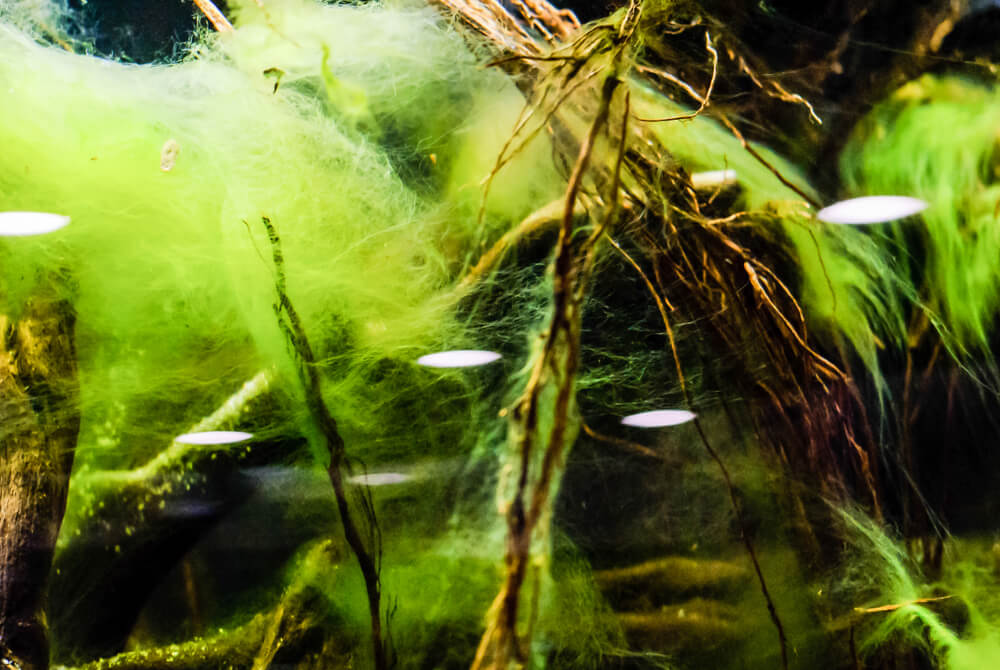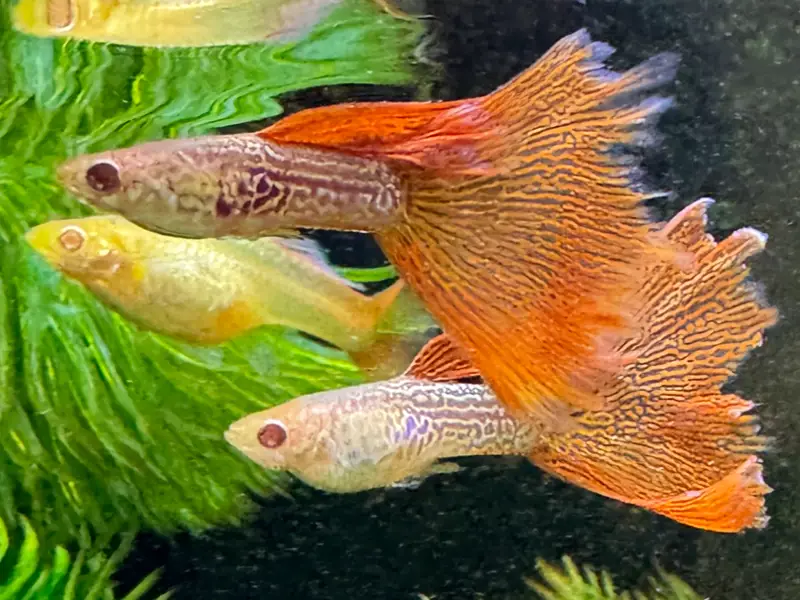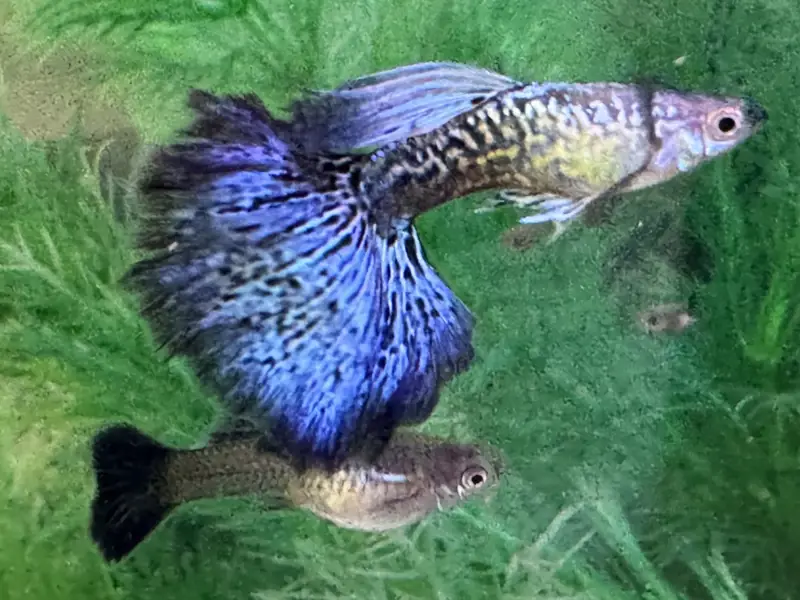Best Algae Control for Aquariums
Posted by on 02/04/2024
One of the most challenging aspects of aquarium keeping is combating algae. When a tank is uncared for, it's almost inevitable that algae will appear. What's worse, even some hobbyists who think they may be doing everything right still will encounter algae in their tanks.
While both freshwater and saltwater tanks are capable of growing algae, in this post we're going to focus on algae control for freshwater aquariums. We're going to cover some of the best methods to control algae so that it doesn't take over your tank, and we'll even provide some recommendations for removal.
January's Giveaways on Light Fish
What Causes Algae?
The number one cause for algae in freshwater aquariums is too much light. Too much light can be the result of high-intensity lighting, running your lights for too long, or a combination of both. Freshwater aquariums without natural aquatic plants are susceptible to algae. When aquarium plants are provided, they will outcompete algae for nutrients, preventing algae from taking hold.
If you have algae in your aquarium, we strongly recommend adding beginner-friendly aquarium plants. These plants are easy to take care of, even for those without a green thumb.
But what if you've added aquatic plants and are still dealing with algae? Let's get into some control methods to keep algae at bay.

Algae Control
We do not recommend any liquid algae solutions. You should avoid adding chemicals or anything unnatural to your aquarium. Luckily, algae can be completely eradicated without using products such as Algae Fix or whatever is being sold at your local fish store.
Here are a few of the things you'll need to control algae in your aquarium.
Surface Agitation
One of the most important aspects of maintaining an aquarium is gaseous exchange. While we won't get into the details of gaseous exchange, the takeaway here is that you'll need a nice ripple of water on your aquarium water's surface. Certain filters, such as HOB (hang-on-back) filters, promote gaseous exchange naturally since the drip of the filter's outflow will break the water's surface.
However, if you're using a canister filter, you may not have enough surface agitation. Adding a powerhead to your tank is a great way to increase surface agitation in such a scenario.
Flow
The next thing you'll want to keep an eye on in your aquarium is flow. Water should be moving throughout your aquarium. A good way to determine if you're providing enough flow is by monitoring any aquatic plants you've added to your tank. Your plants should have a gentle sway to them. Similar to surface agitation, you can increase flow by adding a powerhead, or by upgrading your aquarium filter. Good flow allows nutrients to be absorbed by aquatic plants, leaving little for algae to feed on.
Lighting
Probably the most difficult thing to dial in for algae control is lighting. Without a PAR meter, it will be difficult to determine how much light is considered "too much" for your tank. You'll need to experiment with different lighting durations to determine whether or not you're providing too much light.
You can start by keeping your aquarium lights on for 2-3 hours a day for 7 days. After a week has passed, you can add an hour of lighting. Monitor your tank to see if you notice any algae. If algae present itself, quickly remove it and make a note of the duration. Keep in mind that for this experiment to work, you'll need to ensure you have adequate flow and surface agitation. Otherwise, you won't be able to deduce that you have a lighting issue.
Plant Biomass
Next up is plant biomass. Many beginner hobbyists will purchase a small amount of aquatic plants and expect to have an algae-free tank. If you have powerful lighting or leave your lights on for a long duration, you will need A LOT of plants to outcompete algae. We're talking 70-80% of your tank should be covered in plants! It's important to purchase and plant a lot of plants at once, otherwise your tank will quickly be overrun by algae.
Keep in mind that plants that have been recently introduced into a new aquarium will go through a transition period. This period is often when algae will develop. Hobbyists can get around this period by doing what's known as a DSM (dry start method.) However, this approach only works on aquariums that have yet to be filled with water. If your aquarium is already established, you can reduce the chances of an algae outbreak by keeping light intensity low, and by running a short lighting period.
CO2
While this article is geared towards beginners, we wanted to include a section about CO2 for advanced hobbyists. If you do not inject CO2 into your aquarium, you can ignore this section
Hobbyists who run CO2 in their planted aquariums and are dealing with algae (most likely, black beard algae or green dust algae) will want to ensure that enough CO2 and gaseous exchange is occurring in their tanks. Hobbyists should maintain a constant rate of gaseous exchange, and slowly increase their CO2 injection rate over a few hours. Monitor your aquarium fish for gasping. If you notice your fish are gasping at the surface, you've injected too much CO2. You can perform a small (10%) water change to bring down CO2 levels. If you have a lot of gaseous exchange occurring (strong surface ripple), your fish may never display signs of stress. In this scenario, you'll need to monitor your drop checker for an adequate pH drop (a blue drop checker that transitions to lime green after a 1-2 hour injection period should suffice).
The rate at which CO2 is injected and fish show no signs of gasping, or a large enough pH drop during your lighting period, are good indicators that your CO2 is under control. If there is a CO2 issue, then you'll likely encounter black beard algae. Keep removing black beard algae and re-testing CO2 levels until you can get this parameter under control.
Algae Removal
If algae has already taken hold in your aquarium, then you'll likely want to remove it. There are two different approaches to algae removal, manual removal, and the blackout method. Let's get into what these two removal options entail.
Manual Removal
The easiest removal method is manual removal. Hobbyists can utilize a toothbrush, by twirling the brush around hair algae or by brushing algae off of aquarium hardscape (filters, rocks, driftwood etc.)
An algae scraper, or magnetic algae scraper, will help with algae that has established itself on the aquarium glass. After you've removed any algae, we recommend performing a 50% water change. You can repeat the process as many times as needed until you've eradicated most of the algae. You do not need to remove every bit of algae you see but try and remove as much as you can.
Blackout Method
The blackout method is the best approach for aquariums covered in algae. This method involves covering your aquarium in thick black garbage bags or towels. You'll want to ensure that there is no light getting into your aquarium. Once sufficiently covered, leave the tank for about 5 days. Fish and aquatic plants will be safe for this short period. You can feed any fish before performing the blackout.
Once 5 days have passed, you can remove the trash bags or towels. Most of the algae should have died off. Manually remove any additional algae, and perform a 50% water change. If there is still a lot of algae present in the tank, you can do another blackout after a few days. Keep repeating this process until your tank is algae-free.
Conclusion
As you can see, controlling algae with natural solutions is one of the best ways to keep your tank inhabitants safe. However, controlling algae can still be a delicate process. There's no guarantee that algae won't return after it's been removed. You'll need to ensure that flow, surface agitation, and aquatic plants are all healthy to keep algae at bay.
While it may seem a bit overwhelming at first, don't give up! Combating algae is one of the most difficult challenges of freshwater aquarium keeping, and it often takes hobbyists many months to get a feel for what needs to be done to fend off algae. Have you been successful in your attempts to control algae? Let us know in the comments, and be sure to visit our marketplace where you can shop for new tank additions directly from hobbyists just like yourself.
January's Giveaways on Light Fish


